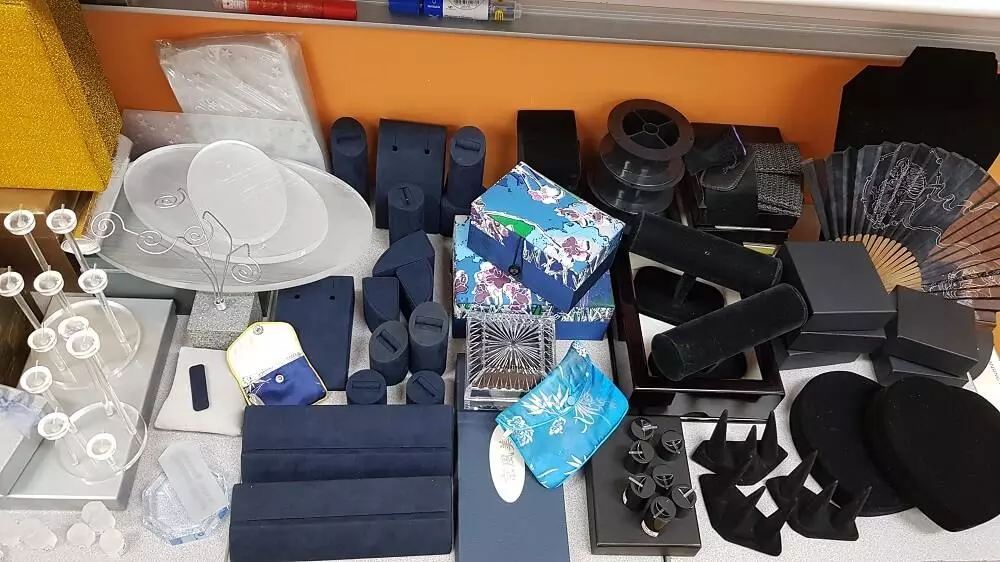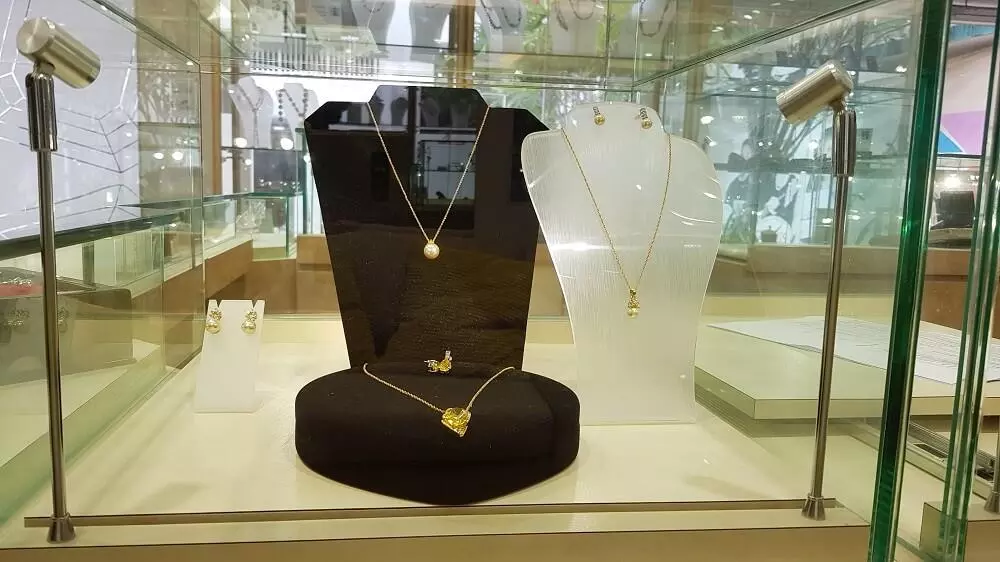Both E-commerce and physical stores require effective merchandising to convert traffic to paying customers. This class combines traditional visual merchandising concepts that apply to physical storefronts as well as branding concepts and catalogue and internet merchandising strategies.
Merchandising is all about imagining your customer journey and making planned, intentional decisions to help customers choose the right product and buy it at the right price, from your store...
What comparisons a customer makes and what signals they receive from displays, sales-people and even other customers combine to affect their perception of value and decision to purchase. By carefully crafting a customer experience - from outside to in-store to after their purchase, you can improve your sales, your brand image, and even your security!
Course outline
-
General Introduction to Merchandising
 Merchandising includes the determination of quantities, adjusting prices for goods and services, creating display designs and developing direct marketing and selling strategies.
Merchandising includes the determination of quantities, adjusting prices for goods and services, creating display designs and developing direct marketing and selling strategies.
Learn strategies on product selection, packaging, promotional pricing, and display in order to stimulate consumers to spend more. -
Understanding Your Customer
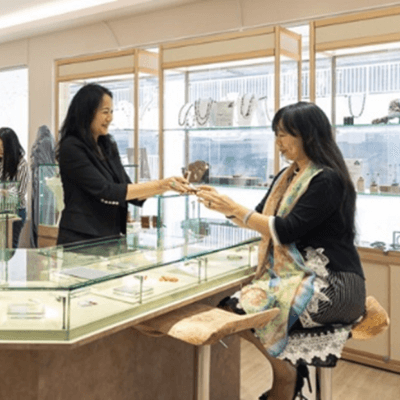 When you wear the hat of a merchandiser, you must also wear the shoes of your customer – imagining where they came from, what they're looking for, and what their experience will be as they walk through your retail space.
When you wear the hat of a merchandiser, you must also wear the shoes of your customer – imagining where they came from, what they're looking for, and what their experience will be as they walk through your retail space.
Learn how to better understand the customer experience by participating on the sales floor to observe customers, and even assist with the sales process. -
Researching Competitors and Your Own Store
 Identifying your target customers and your competition will help you to establish the right choice of merchandise to make your business succeed, and give you many ideas about the correct merchandising of your products to your identified targets.
Identifying your target customers and your competition will help you to establish the right choice of merchandise to make your business succeed, and give you many ideas about the correct merchandising of your products to your identified targets.
Learn how to research and analyse your customers and competitors, and use the findings to determine your merchandising strategies. -
Merchandising Activities and Schedules
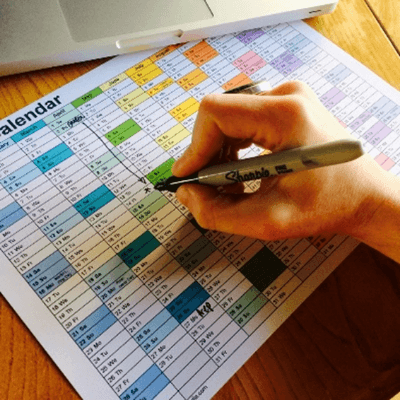 Part of the merchandiser’s job includes rotating displays and updating store merchandising around new product lines, and holidays and seasons. This is important for attracting repeating customers by always having new and exciting presentations for them to enjoy.
Part of the merchandiser’s job includes rotating displays and updating store merchandising around new product lines, and holidays and seasons. This is important for attracting repeating customers by always having new and exciting presentations for them to enjoy.
Learn how the merchandiser can make use of a merchandising calendar to create a plan and organize promotions, campaigns, cross merchandising, and related information in advance. -
Physical Store Layouts
 The storefront represents the first impression that a customer gets when coming to the store.
The storefront represents the first impression that a customer gets when coming to the store.
Understand how the merchandiser must manage the storefront, which includes display windows, exterior design fittings, signage, color, and other aspects, as part of their day-to-day activities. -
Common Jewellery Fixtures and Props
 Fixtures are the pieces of furniture that hold the merchandise for sale, and these can vary substantially from wall fixtures to cabinets to tabletops to glass topped showcases.
Fixtures are the pieces of furniture that hold the merchandise for sale, and these can vary substantially from wall fixtures to cabinets to tabletops to glass topped showcases.
Understand how to use fixtures and props like ring holders, pillows, and platforms, in order to generate focus areas as they can have significant impact on the ease with which a customer can navigate the store and access the merchandise. -
Planning Products in the Store and Planograms
 Effective product grouping assists in inventory management, customer decision-making, and maintaining the overall look of the store.
Effective product grouping assists in inventory management, customer decision-making, and maintaining the overall look of the store.
Learn the importance of a planogram – a 2-dimensional representation of the stores fixtures and display areas – and how to create one to highlight where products will be sold and allow proper planning in advance of actual display preparation and product layout. -
Visual Merchandising of Products and Displays
 Displays are ways of presenting products in an enticing manner to help a customer understand the varieties available and come to a purchase decision easily.
Displays are ways of presenting products in an enticing manner to help a customer understand the varieties available and come to a purchase decision easily.
Discover methods, such as blocking techniques and grouping strategies, to focus your customer’s buying attention without them getting confused by the wide selection available in the store. -
Packaging
 While not always a driver of decisions in store, packaging can make a big difference to repeat customers, or customers searching for gifts.
While not always a driver of decisions in store, packaging can make a big difference to repeat customers, or customers searching for gifts.
Understand the importance of good packaging as it can help reinforce the brand image, and can make or break a purchase decision. -
Value-added Benefits and How to Communicate Them in Displays and Points of Purchase
 Frequently, a product purchase offers benefits to the customer that extend beyond the actual product itself, and the merchandiser must consider how to incorporate aspects of these value-added benefits into the information relayed to customers, such as in displays and points of purchase.
Frequently, a product purchase offers benefits to the customer that extend beyond the actual product itself, and the merchandiser must consider how to incorporate aspects of these value-added benefits into the information relayed to customers, such as in displays and points of purchase.
Understand how to make effective use of points of purchase as they offer excellent opportunities for additional sales, and are a strong focus of merchandisers to improve overall store performance. -
Discounting Methods and Pitfalls
 The display of pricing information can impact perception of value and likelihood of purchase. However, most merchandisers end up destroying this perception when they offer promotions.
The display of pricing information can impact perception of value and likelihood of purchase. However, most merchandisers end up destroying this perception when they offer promotions.
Learn effective strategies by carefully adding value to offers instead of discounting prices, and anchoring customers on similar undiscounted products, so that promotions can be successful in generating sales without damaging the perceived value of a brand or its products. -
Safety, Security, and Maintenance of Displays
 The least glamorous but most important aspect of merchandising display is the maintenance of showcases and displays throughout their lifetime. Merchandising efforts can also impact the ease with which shoplifters can access product and remove it from the store.
The least glamorous but most important aspect of merchandising display is the maintenance of showcases and displays throughout their lifetime. Merchandising efforts can also impact the ease with which shoplifters can access product and remove it from the store.
Understand the responsibilities of the merchandiser in maintaining displays, areas of interests, and other areas that may require special care, in order to ensure that they are properly secured and remain looking their best at all times. -
Working with Sales Teams
 While most merchandisers don't think of themselves as sellers, they need to work closely with the sales floor to ensure a smooth and pleasant purchasing experience for the customer.
While most merchandisers don't think of themselves as sellers, they need to work closely with the sales floor to ensure a smooth and pleasant purchasing experience for the customer.
Learn how the merchandiser must anticipate the sales process, train sales staff to understand the information being conveyed in displays, highlight and recommend products for customers that are attracted to certain areas of the store, and generally participate in sales activities. -
Inventory Management
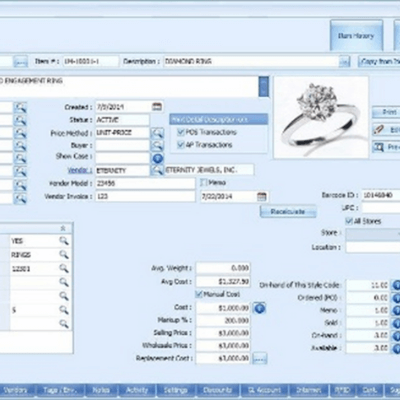 Merchandisers always work to move existing merchandise, and effectively promote markdowns to allow for effective inventory turn.
Merchandisers always work to move existing merchandise, and effectively promote markdowns to allow for effective inventory turn.
Learn how the merchandiser need to monitor inventory levels, plan around expected sales from their efforts, as well as adjust displays, areas of interest, and even entire fixtures in order to be able to support available inventory. -
Catalogue Merchandising
 Catalogues are useful tools for both new entrepreneurs and established businesses because they provide a professional image, are portable and easy to distribute, and are great for repeat sales. However, developing a catalogue is no easy task as it requires several steps and there are many things to consider when creating one.
Catalogues are useful tools for both new entrepreneurs and established businesses because they provide a professional image, are portable and easy to distribute, and are great for repeat sales. However, developing a catalogue is no easy task as it requires several steps and there are many things to consider when creating one.
Understand the pros and cons of a catalogue, and the important steps the merchandiser must take when developing one. -
Internet Storefronts and Online Merchandising
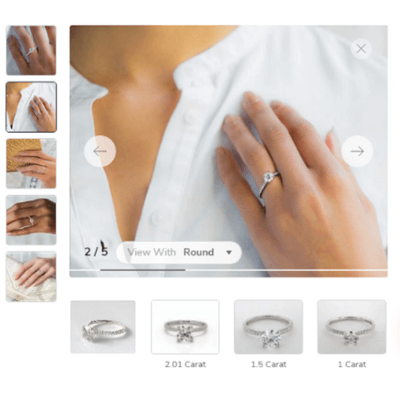 User Experience (or UX) on e-Commerce sites is akin to the in-store experience merchandisers seek to create using traditional means. Many of the concepts you will think of in your store can be applied to jewellery e-commerce sites.
User Experience (or UX) on e-Commerce sites is akin to the in-store experience merchandisers seek to create using traditional means. Many of the concepts you will think of in your store can be applied to jewellery e-commerce sites.
Gain an understanding of how usability and user experience on Internet storefronts must be informed by merchandising concepts used for physical storefronts, and learn best practices for effective online presentation.
- 1
Expect a hands-on and fun class!

Course Instructors
-
Rob Schilling
Rob Schilling is an expert global trainer, professional coach, jewellery designer, and a JDMIS graduate. Rob has passionate interest and decades of experience working in both jewellery industry and corporate training for C-suite professionals. Read More -
Alexander Zupancich
Alexander distils many years of experience in building businesses and assisting small businesses to grow as well as plenty of jewellery-specific experience. Beyond his two decades of hands-on marketing and retail experiences, Alex imparts the most relevant theories and best practices learned from studying marketing management in the USA, Singapore, France and UAE. Read More
- 1
- 2
-
Duration

30 hours
1 week (Full-time), or
JDMIS has flexible make-up schedules and graduates can return without cost for refresher courses (subject to availability).
5 weeks (Part-time)
- 1
Course Fee:
Invest in Your Creative Future
One payment. Lifetime access. No recurring fees.
Private Atelier Experience
30 hours exclusive in-studio training with Master Trainers
Available for corporate groups & private cohorts (min. 6 participants)
Self-Paced Essentials
Learn at your own pace
Guided Certification
Get certified with expert feedback
Classroom Immersive
Global Live Interactive
Maximum transformation
Add the Professional Toolkit
Everything you need to complete every project
Why Lifetime Access Changes Everything
See how different learning models compare
Monthly Subscriptions
Pay monthly to access. Stop paying = lose everything. Want to revisit in 2 years? Subscribe again.
Traditional Schools
Show up, hope you learn, go home. No recordings, no second chances. Miss a class? Miss it forever.
JDMIS Lifetime Access
Pay once, own forever. Revisit any module, any time, for life. Your content never expires.


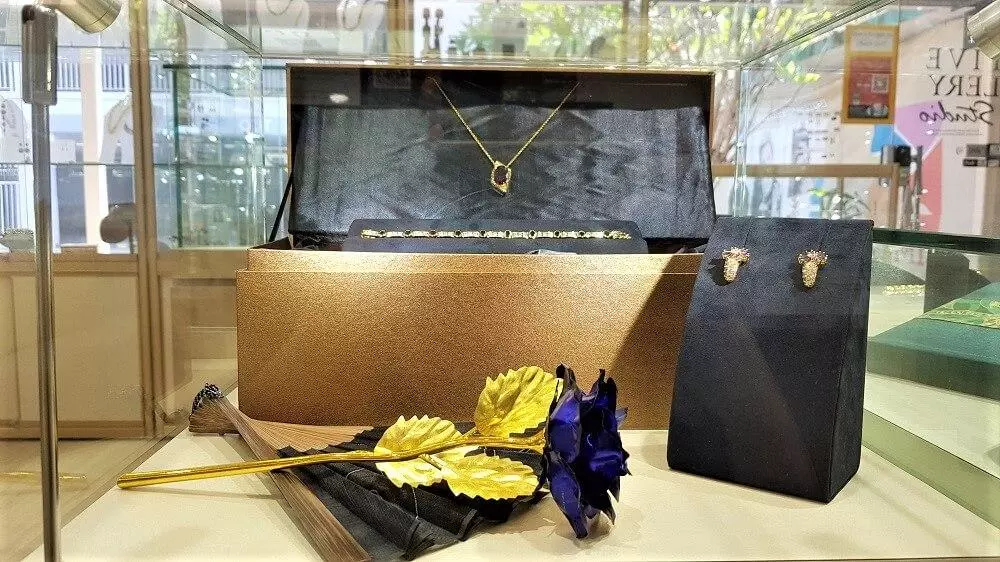
 Merchandising includes the determination of quantities, adjusting prices for goods and services, creating display designs and developing direct marketing and selling strategies.
Merchandising includes the determination of quantities, adjusting prices for goods and services, creating display designs and developing direct marketing and selling strategies.  When you wear the hat of a merchandiser, you must also wear the shoes of your customer – imagining where they came from, what they're looking for, and what their experience will be as they walk through your retail space.
When you wear the hat of a merchandiser, you must also wear the shoes of your customer – imagining where they came from, what they're looking for, and what their experience will be as they walk through your retail space.  Identifying your target customers and your competition will help you to establish the right choice of merchandise to make your business succeed, and give you many ideas about the correct merchandising of your products to your identified targets.
Identifying your target customers and your competition will help you to establish the right choice of merchandise to make your business succeed, and give you many ideas about the correct merchandising of your products to your identified targets.  Part of the merchandiser’s job includes rotating displays and updating store merchandising around new product lines, and holidays and seasons. This is important for attracting repeating customers by always having new and exciting presentations for them to enjoy.
Part of the merchandiser’s job includes rotating displays and updating store merchandising around new product lines, and holidays and seasons. This is important for attracting repeating customers by always having new and exciting presentations for them to enjoy.  The storefront represents the first impression that a customer gets when coming to the store.
The storefront represents the first impression that a customer gets when coming to the store.  Fixtures are the pieces of furniture that hold the merchandise for sale, and these can vary substantially from wall fixtures to cabinets to tabletops to glass topped showcases.
Fixtures are the pieces of furniture that hold the merchandise for sale, and these can vary substantially from wall fixtures to cabinets to tabletops to glass topped showcases.  Effective product grouping assists in inventory management, customer decision-making, and maintaining the overall look of the store.
Effective product grouping assists in inventory management, customer decision-making, and maintaining the overall look of the store.  Displays are ways of presenting products in an enticing manner to help a customer understand the varieties available and come to a purchase decision easily.
Displays are ways of presenting products in an enticing manner to help a customer understand the varieties available and come to a purchase decision easily.  While not always a driver of decisions in store, packaging can make a big difference to repeat customers, or customers searching for gifts.
While not always a driver of decisions in store, packaging can make a big difference to repeat customers, or customers searching for gifts.  Frequently, a product purchase offers benefits to the customer that extend beyond the actual product itself, and the merchandiser must consider how to incorporate aspects of these value-added benefits into the information relayed to customers, such as in displays and points of purchase.
Frequently, a product purchase offers benefits to the customer that extend beyond the actual product itself, and the merchandiser must consider how to incorporate aspects of these value-added benefits into the information relayed to customers, such as in displays and points of purchase.  The display of pricing information can impact perception of value and likelihood of purchase. However, most merchandisers end up destroying this perception when they offer promotions.
The display of pricing information can impact perception of value and likelihood of purchase. However, most merchandisers end up destroying this perception when they offer promotions.  The least glamorous but most important aspect of merchandising display is the maintenance of showcases and displays throughout their lifetime. Merchandising efforts can also impact the ease with which shoplifters can access product and remove it from the store.
The least glamorous but most important aspect of merchandising display is the maintenance of showcases and displays throughout their lifetime. Merchandising efforts can also impact the ease with which shoplifters can access product and remove it from the store.  While most merchandisers don't think of themselves as sellers, they need to work closely with the sales floor to ensure a smooth and pleasant purchasing experience for the customer.
While most merchandisers don't think of themselves as sellers, they need to work closely with the sales floor to ensure a smooth and pleasant purchasing experience for the customer.  Merchandisers always work to move existing merchandise, and effectively promote markdowns to allow for effective inventory turn.
Merchandisers always work to move existing merchandise, and effectively promote markdowns to allow for effective inventory turn.  Catalogues are useful tools for both new entrepreneurs and established businesses because they provide a professional image, are portable and easy to distribute, and are great for repeat sales. However, developing a catalogue is no easy task as it requires several steps and there are many things to consider when creating one.
Catalogues are useful tools for both new entrepreneurs and established businesses because they provide a professional image, are portable and easy to distribute, and are great for repeat sales. However, developing a catalogue is no easy task as it requires several steps and there are many things to consider when creating one.  User Experience (or UX) on e-Commerce sites is akin to the in-store experience merchandisers seek to create using traditional means. Many of the concepts you will think of in your store can be applied to jewellery e-commerce sites.
User Experience (or UX) on e-Commerce sites is akin to the in-store experience merchandisers seek to create using traditional means. Many of the concepts you will think of in your store can be applied to jewellery e-commerce sites. 






